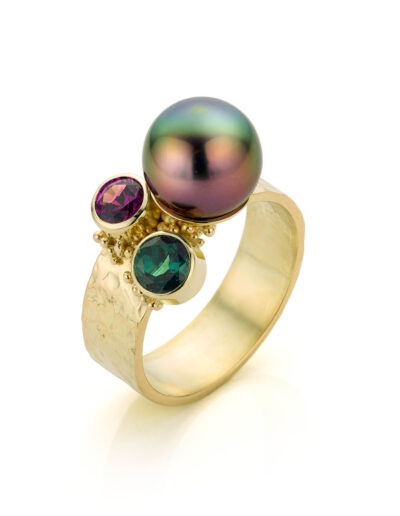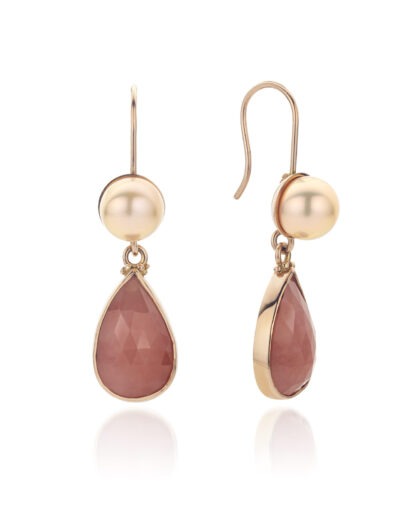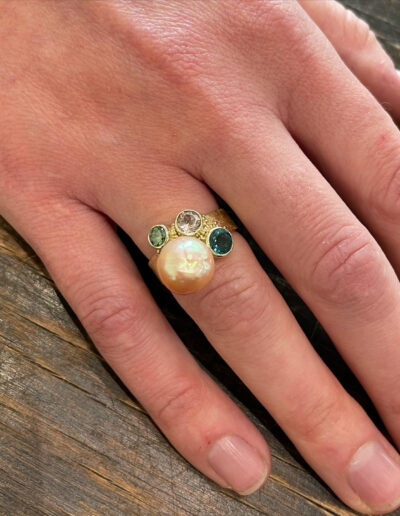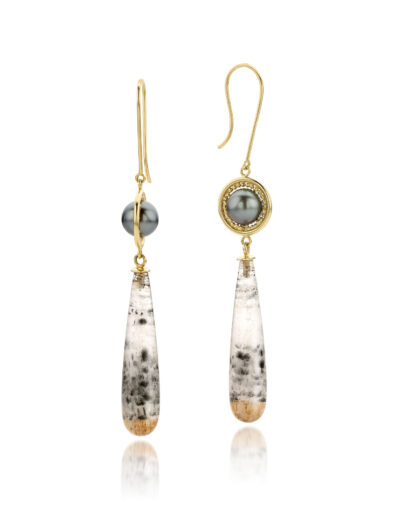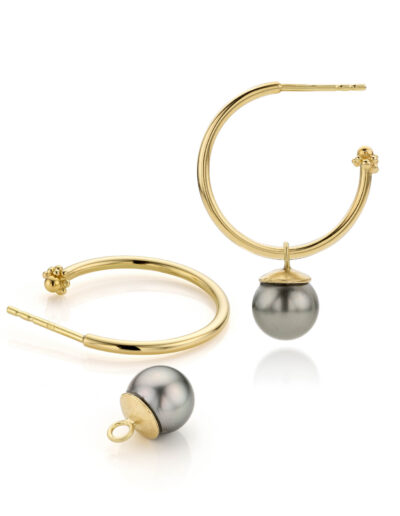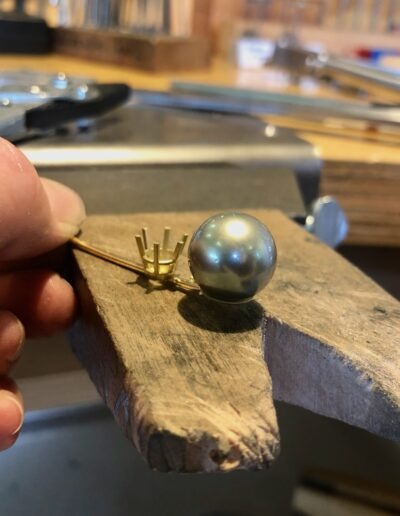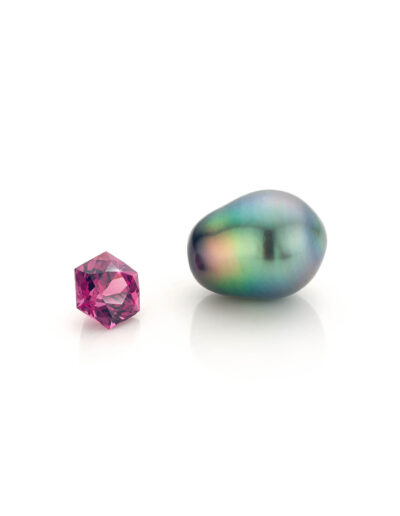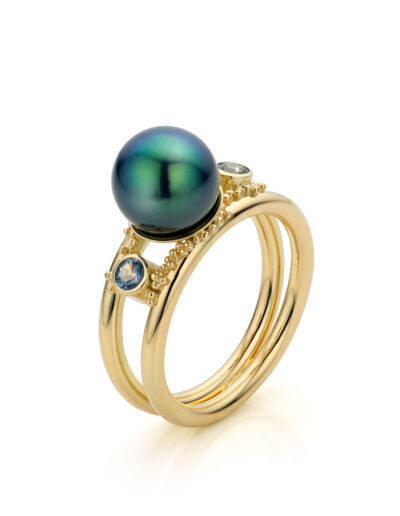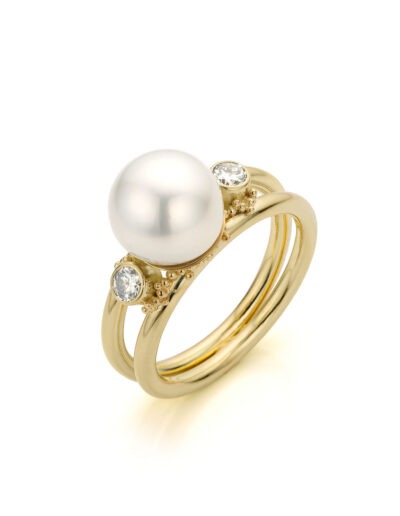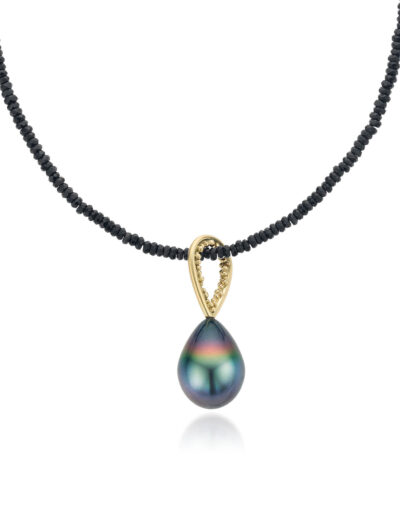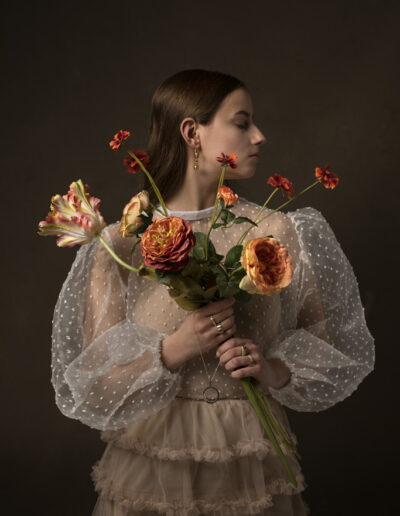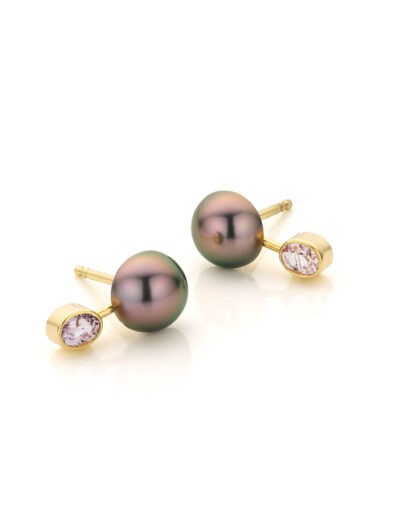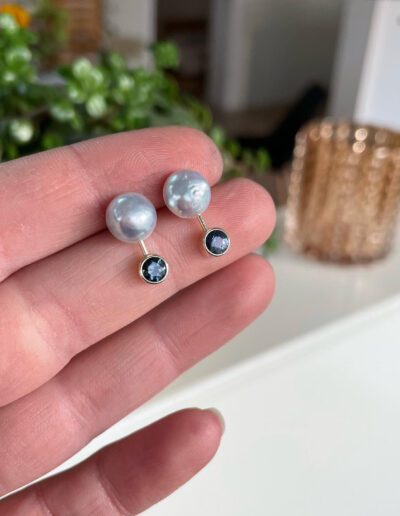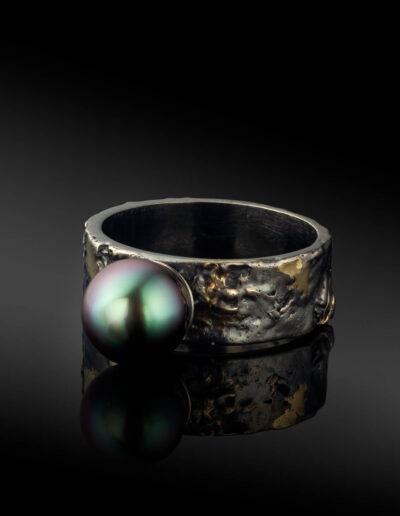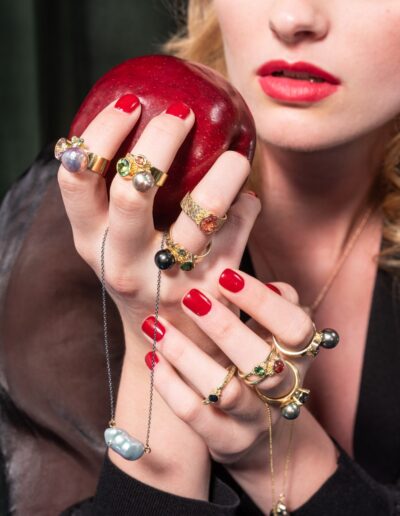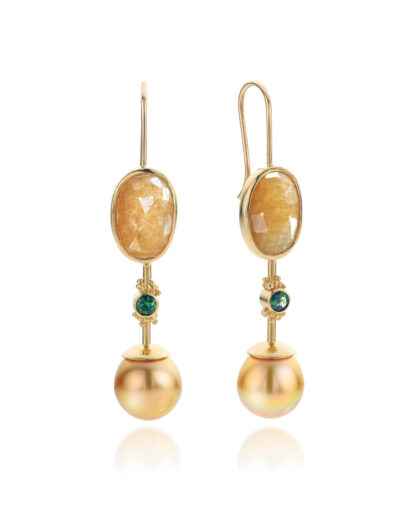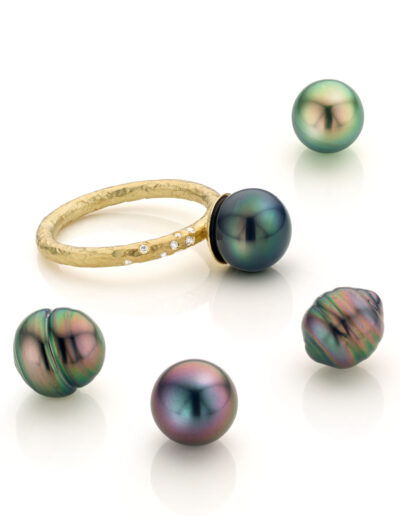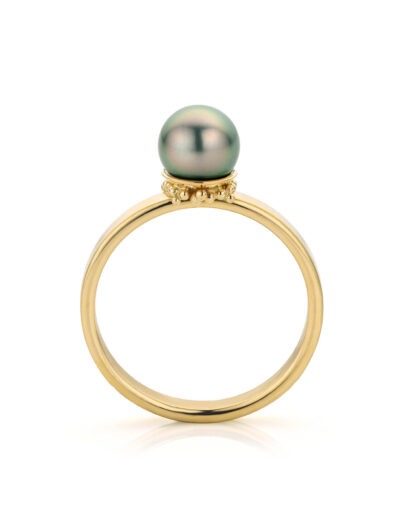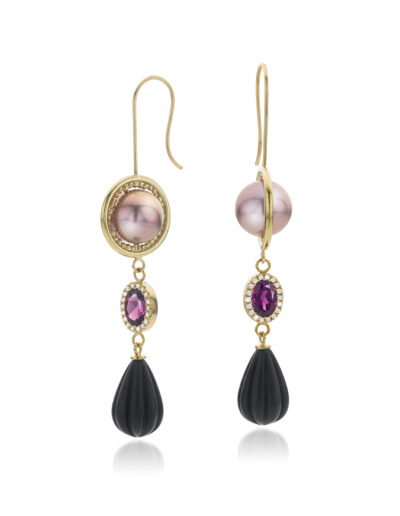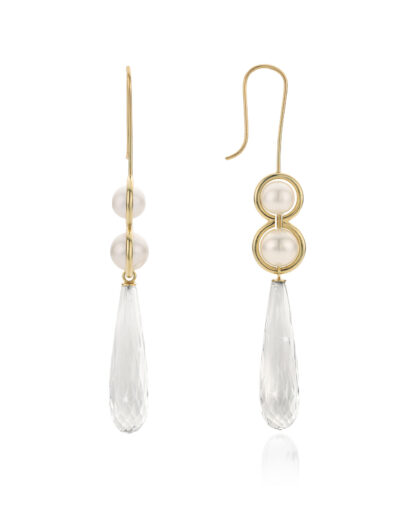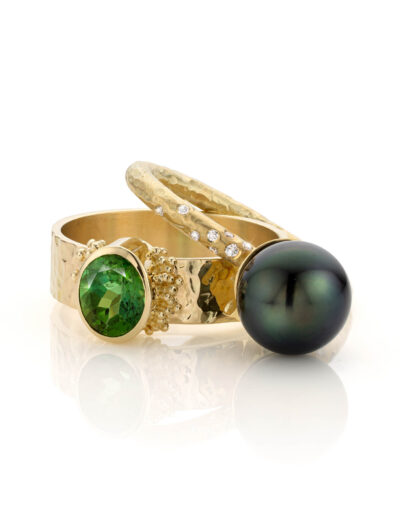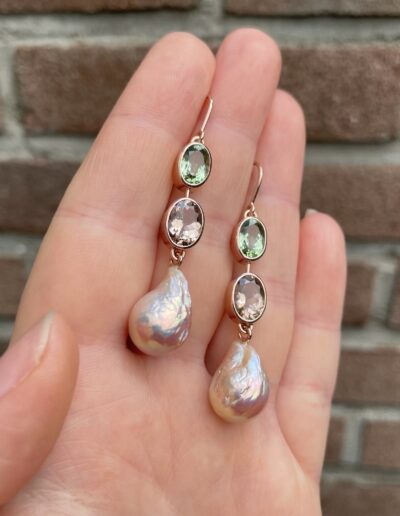Pearls: anything but corny
Pearls corny? I used to think that too. Stylish, sure, but frankly not really my thing. Until I was introduced to Zylana, one of my suppliers. She showed me the fascinating world of pearls – and from then on everything changed.
I’ve been sold ever since. I discovered how beautifully pearls combine with the gemstones I was already working with. As a result, they have been popping up more and more in my jewellery. Not because they should, but precisely because they are such a special addition: versatile, timeless and with a natural luster that no other gemstone matches.
And because there is so much to tell about pearls, in this blog I will take you through their origins, colors, types and history – with a few fun facts in between. In addition, separate blogs will follow soon in which I will look at each type of pearl individually in more detail.
How is a pearl created? (And why sand grains have nothing to do with it)
The romantic idea that a pearl is created by a grain of sand in an oyster? Unfortunately, that’s a myth. Oysters and mussels filter water full of sand all day. If that were the cause, they would continuously produce pearls.
Reality is different. A pearl is created by a parasite or microscopic particle that the shell cannot remove. As a defense mechanism, the oyster encapsulates this with layers of nacre. As a result, a shiny pearl slowly grows.
Today, most pearls are cultured. In this process, pearl farmers place a small ball (usually of shell material) into the oyster to start the process. It remains a natural growth process – but with a push from man.
The color of a pearl
The color of a pearl is mainly determined by the inside of the shell in which it grows:
-
Akoya oysters: silver-white or cream interior → pearls in white, cream, pale pink or blue-gray.
-
South Sea oysters: white, silver or gold interior → pearls in white, silver or gold.
-
Tahitioesters: dark interior → pearls in gray, green, blue, purple or almost black.
In addition, more factors come into play. Thus, the thickness of the pearl layer determines how intense and durable the color is. Sheen is also important because it gives the vibrancy and sparkle. And sometimes you can see the special orient effect: an iridescent rainbow play moving across the surface. That’s what makes a pearl extra enchanting.
In short: no two pearls are ever exactly alike.
Types of pearls and their growth period
The shell, growth period and origin ultimately determine the appearance and value of a pearl.
-
Akoya pearls (1-2 years growth time): classic round (think traditional pearl necklace), originating from Japan and China. White to cream, often with a subtle pink or silver glow. Small but refined (5-9 mm).
-
Tahitian pearls (2-3 years growth time): native to French Polynesia. They are known for their mysterious shades: black, green, blue or eggplant. Relatively rare – and especially the smaller sizes (8-9 mm) are more expensive.
-
South Sea pearls (2-4 years growth time): large, rare and native to Australia, Indonesia and the Philippines. Colors range from white and silver to gold, often with a satin sheen. They can grow up to 20 mm in size.
-
Freshwater pearls (6 months-2 years growth time): grow in lakes and rivers, especially in China. Often oval or whimsical in shape, available in a variety of colors. They are affordable, making them ideal for playful designs.
If you want to know how pearls combine with colorful gemstones, take a look at the Elevance collection – there pearls and gemstones form an elegant whole together.
Pearls through the ages – from emperors to cultivation
Over the centuries, pearls have always had an almost mythical appeal. As early as 2000 B.C., they were described as precious treasures in China. In Europe they symbolized purity, while in China they were believed to offer protection from fire and dragons.
Legends abound. Cleopatra, for example, is said to have dissolved a pearl in wine to show her wealth. Julius Caesar reportedly gifted his beloved Servilia a black pearl that would be worth billions today.
For centuries, pearls were so rare that only kings and emperors could wear them. It wasn’t until the early 20th century that this changed, thanks to Japanese pioneers who perfected the art of cultivation. Since then, pearls have become more accessible – but their magic and beauty have always remained.
Why pearls continue to inspire me
What began with a casual acquaintance has since grown into a true love. Pearls have found their place in my work as well as in my heart. They are never 100 percent perfect – and special for that very reason.
In my workshop, I love to show you how versatile pearls are and how beautifully they combine into a piece of jewelry that really suits you. Simply make an appointment through my contact page.
In addition, separate blogs will follow soon in which I will look at each type of pearl individually in more detail.
Love,
Sarah

